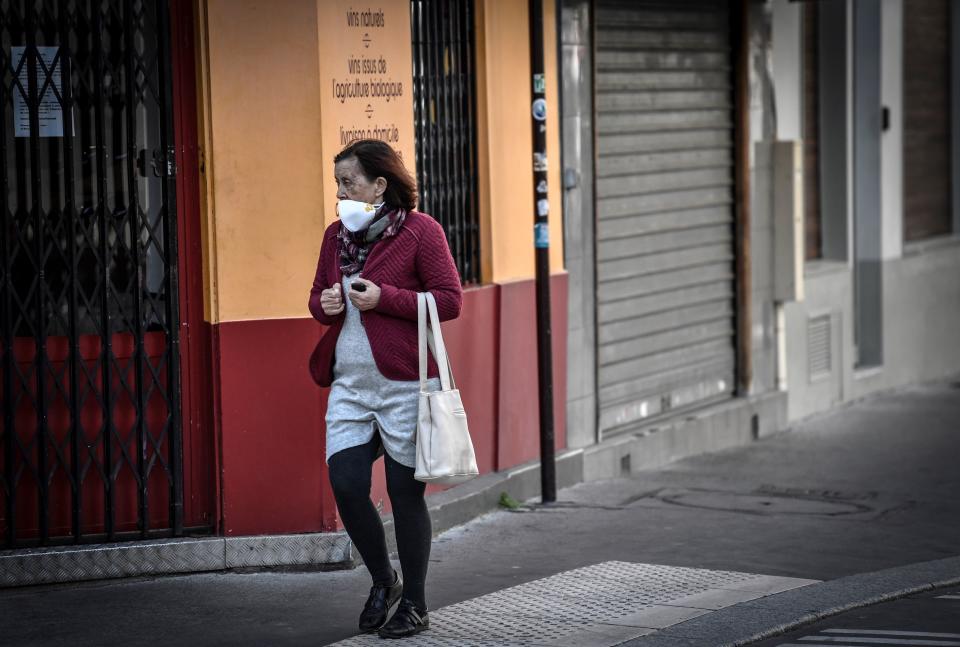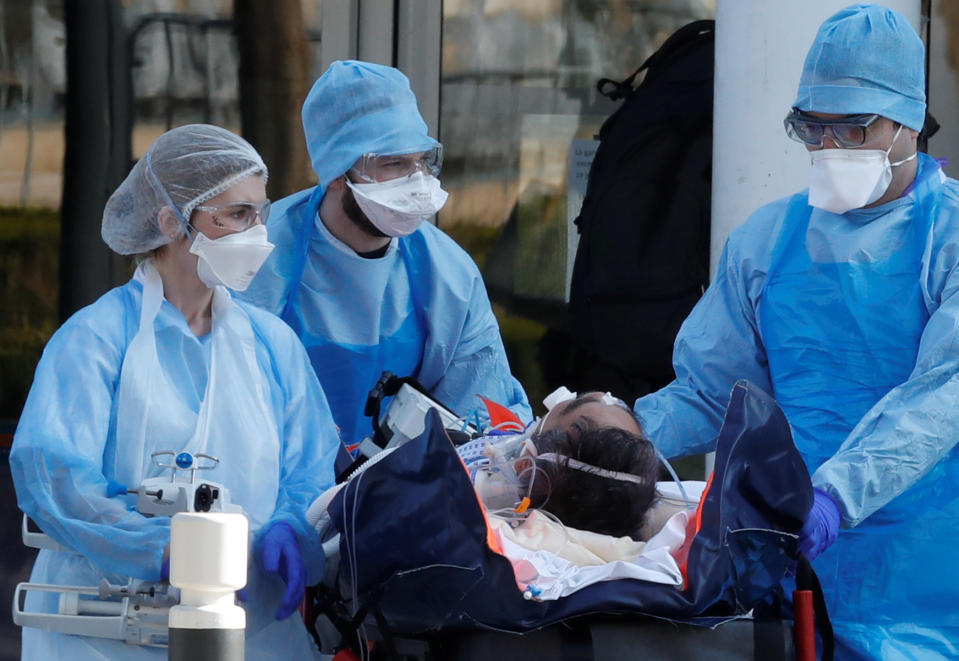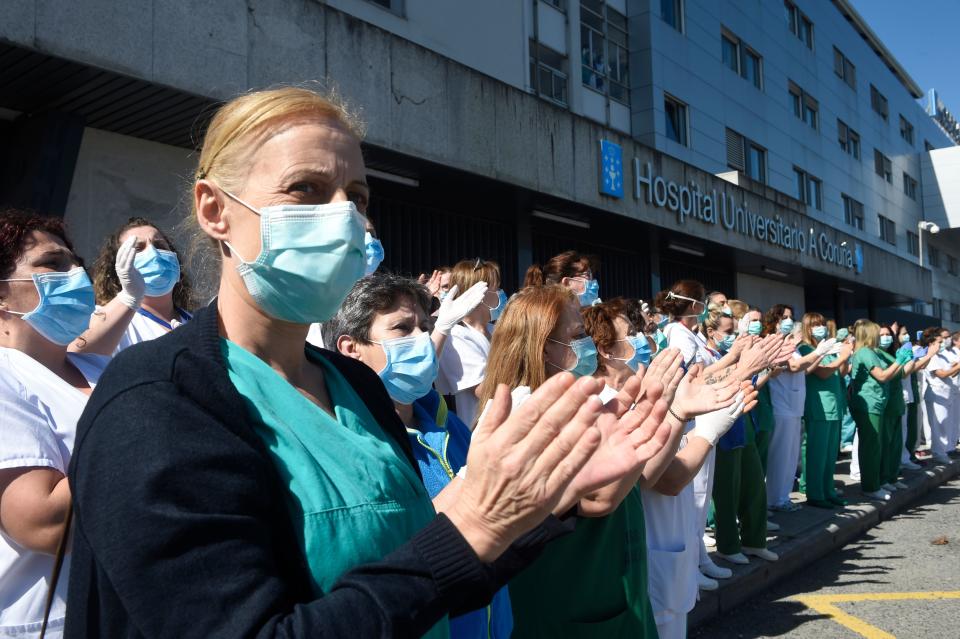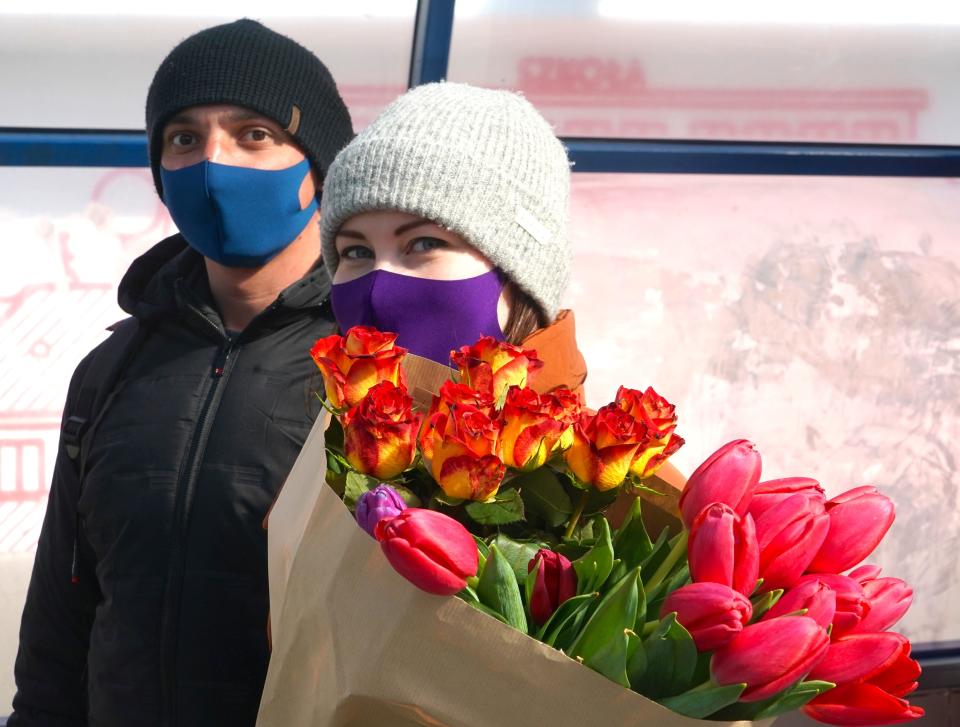Coronavirus: stay-at-home rules 'must be relaxed gradually to avoid a second outbreak peak'

Scientists have warned draconian measures to combat the coronavirus should be eased gradually to avoid a second “peak” in the outbreak.
A team from the London School of Hygiene & Tropical Medicine (LSHTM) used a mathematical model to simulate the impact of relaxing or extending school and workplace closures in the Chinese city Wuhan, where the new strain emerged.
Results suggest lifting these measures in March may cause a second wave of cases to come to light in late August.
Maintaining restrictions until the beginning of April, however, would likely delay a “second peak” until October, buying the health service more time.
Latest coronavirus news, updates and advice
Live: Follow all the latest updates from the UK and around the world
Fact-checker: The number of COVID-19 cases in your local area
Explained: Symptoms, latest advice and how it compares to the flu
“The city needs to be really careful to avoid prematurely lifting physical distancing measures, because that could lead to an earlier secondary peak in cases,” said lead author Dr Kiesha Prem.
“But if they relax the restrictions gradually, this is likely to both delay and flatten the peak.”
While the exact timings will vary between countries, the scientists believe the principal of their findings will apply everywhere.

The coronavirus is thought to have emerged at a seafood and live animal market in the Chinese city Wuhan, capital of Hubei province, at the end of last year.
“Unprecedented measures” were taken to control the outbreak, with strict travel restrictions being enforced in the city on 23 January.
This was extended to the rest of Hubei on 26 January.
The province, aside from Wuhan, has since lifted its travel restrictions. Wuhan will partially ease the measure on 8 April.
Travel aside, authorities closed schools, extended the Chinese New Year celebrations to keep adults from their workplace and promoted social distancing.
The coronavirus has spread well beyond China, with cases being confirmed in 175 countries across every inhabited continent.
Since the outbreak was identified, more than 492,600 patients have been reported, of whom over 119,900 have “recovered”, according to John Hopkins University.
Cases in China have been plateauing since the end of February, with Europe now the epicentre of the pandemic.
The UK has had more than 9,600 confirmed cases, of whom 465 have died.
Globally, the death toll has exceeded 22,100.

‘Crucial for policymakers everywhere’
The LSHTM scientists based their model on information showing how often people of different ages mix in varying locations.
Numerous assumptions had to be made, including how long the average patient is infectious for and the coronavirus’ basic reproduction number.
This is the number of people a patient statistically goes onto infect.
For example, a number of three means every patient is expected to pass the virus to three others.
The coronavirus’ basic reproduction number has been debated, with Professor David Heymann, also from the LSHTM, previously telling Yahoo UK it “changes daily as new information comes in”.
When it comes to how long a patient is infectious for, scientists from John Hopkins University looked at 181 people who tested positive 4 January and 24 February.
They found most developed the tell-tale flu-like symptoms within five days, while nearly all (97.5%) endured fever, cough and breathlessness within 11.5 days.
Experts claimed this supported a 14-day quarantine.
After taking these assumptions into account, results of the LSHTM research suggest staggering the relaxation of Wuhan’s interventions until the beginning of April would reduce the number of infections by more than 92% by mid-2020.
By the end of the year, infections would be expected to be down 24%, the scientists wrote in The Lancet Public Health.
“Our results won't look exactly the same in another country, because the population structure and the way people mix will be different,” said study author Dr Yang Liu.
“But we think one thing probably applies everywhere: physical distancing measures are very useful, and we need to carefully adjust their lifting to avoid subsequent waves of infection when workers and school children return to their normal routine.
“If those waves come too quickly, that could overwhelm health systems.”
Dr Tim Colbourn, from University College London, called the research “crucial for policymakers everywhere”.
Writing in a linked editorial, he added: “It indicates the effects of extending or relaxing physical distancing control measures on the coronavirus outbreak in Wuhan.
“Given many countries with mounting epidemics now potentially face the first phase of lockdown, safe ways out of the situation must be identified.
“New country-specific models should incorporate testing, contract tracing and localised quarantine of suspected cases as the main alternative intervention strategy to distancing lockdown measures, either at the start of the epidemic, if it is very small.
“Or after the relaxation of lockdown conditions, if lockdown had to be imposed to prevent healthcare system overload in an already mounting epidemic”.

‘The world is holding its breath waiting to see what happens’
Dr James Gill, from Warwick Medical School, praised the research, saying: “The implications of this are profound.
“Maintaining restrictions until April appears to have a significant effect on ‘flattening the curve’ and has the potential to delay any second peak, benefits which the model shows are significantly lost if restrictions are abruptly lifted, rather than reduced in a staggered manner.
“The proposals put forward here align with current practices and support the continuation of the quarantine efforts to reduce the case load burden on health infrastructures.
“Given the current levels of assumptions already in use for government public health responses, it is gratifying to see a reasoned model which may be able to further guide policymakers.”
Prof Tom Solomon, from the University of Liverpool, added we will only know if lifting restrictions triggers a second outbreak after the event.
“The world is holding its breath waiting to see what happens when Wuhan eases the physical distancing measures that it imposed some months ago,” he said.
Will easing restrictions lead to a second wave of coronavirus?
“The measures clearly brought the outbreak under control, but will easing them lead to a second wave of [the coronavirus]?
“This modelling paper suggests rather than easing the measures in March in Wuhan, they should be held in place ‘til April to give the health systems more time to recover and prepare for a likely second wave.
“There are so many uncertainties, however, I suspect the only way we will know for sure is to see what happens when the measures are eased.”
Prof Solomon suggests authorities in Wuhan “very slightly” ease the measures for three weeks, perhaps by allowing people to spend more time outdoors, but without social contact.
“We would then be able to see the impact on infection rates and lock down again if needed,” he said.

 Yahoo News
Yahoo News 

